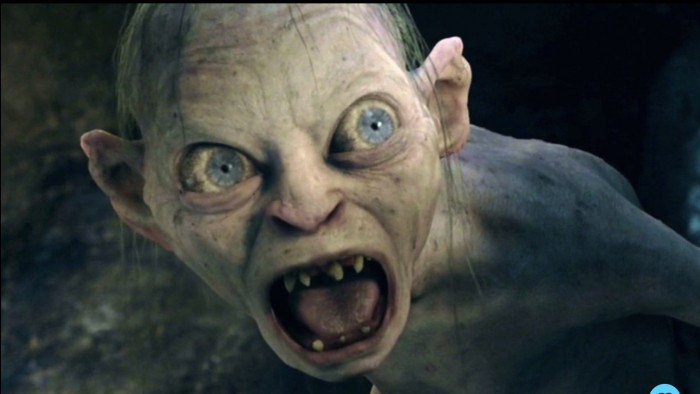The new X-Men film explores our obsession with time travel all over again. Author Damian Dibben explains why a real-life time machine is closer than we think (sort of)
You will have heard that X-Men: Days Of Future Past is out this week and that it sees the original characters join forces with their younger selves to win a war that takes place across two time periods. It’s the latest in a long list of novels, TV shows and films that deal with time travel – an obsession that has captured the imagination of writers for centuries. In the 12th century, for instance, English author Walter Map wrote a novel about a royal hunting party who are transported 200 years into the future. Since then, voyaging through time has preoccupied the world and been explored in countless books and films from Back To The Future to Looper. But why? And is it actually possible?
Do The Time Warp
First things first: we’re all time travellers already. In the simplest terms, we grow old, we travel forward through time. We remember things, we travel back. Gaze at the North Star, for example, the bright pin of light that hangs over our hemisphere. It takes 400 years for that light to reach us. As we look at that star, we’re peering back centuries.
Of course, anyone on a planet close to the North Star, in 2014, with a telescope trained on the dim blue ball of Earth, wouldn’t see us, they’d see men in doublets attending the first performance of Shakespeare’s The Tempest or bear baiting or something.
Pretty mind-bending, eh? When I started writing The History Keepers – a series of adventures about a boy who finds his parents are lost in time – I decided to set off on a quest to find out more.
Einstein was my first stop. He proved that travelling forward in time is absolutely feasible. In his Theory Of Relativity, he showed that time and space are linked in a four-dimensional fabric known as space-time. To hugely over-simplify, this means that the faster you travel, the slower time moves. So if you voyaged on an absurdly speedy spaceship – let’s say it went at a breezy 450 million miles per hour, sluggish compared to the speed of light – time would crawl and when you made it back to Earth you’d be younger than the friends you went to school with.
But let’s face it: it’s not practical. It’s estimated that the Russian astronaut Sergei Avdeyev, who was in orbit for 748 days in total, became younger by only a 50th of a second.
Cutting Time
My quest continued. I met up with Professor Andy Parker, legendary particle physicist, head of the Cavendish Institute and one of the masterminds of the Large Hadron Collider (pictured left) in Switzerland, which I plan to visit in summer for a personal guided tour. He told me time travel is one of his most exciting and important areas of research. “There was no theorem to prevent its existence,” he said. “And that if space-time is warped enough, it could be absolutely possible.”
For those of you who may go blank at the mention of the Large Hadron Collider, let me explain the basics. Everything in the known universe is made up of atoms, but atoms themselves are made up of smaller particles, which in turn are composed of even more infinitesimal sub-particles. These unimaginably tiny parcels hold the key to everything and have their own quirky set of laws.
The Hadron Collider is a 17-mile circular tunnel below the ground in Switzerland where super-magnets accelerate these particles at near light speeds, sending them round the circuit 11,000 times a second (I’ll repeat, a circuit of 17 miles, 11,000 times a second) smashing them together to open up their secrets. Can anything travel faster than light? (A huge bonus for would-be time travellers.) How did the universe begin? How will it end? Are there more dimensions to it than we’re aware of? How many more? What existed before the universe? These are the questions they’re asking and all of the answers are feeding the research into time travel itself.
A couple of years previously, two more scientists at the Hadron Collider claimed to have identified a minute particle, the Higgs singlet, that could jump into a fifth dimension and “cut through time like a hot knife in butter”. They had to point out that, as travel would be limited to just these particles, it wouldn’t be possible to transport a whole person yet, so we couldn’t return to stop Hitler or prevent the murder of Julius Caesar. However, if we could control these singlets, we could, in principle, send a cosmic missive back instructing someone else to do so.
And there are other theories too, that involve finding shortcuts to the past. Many scientists believe that space contains wormholes, portals where two black holes connect to make a tear in the fabric of space-time and by passing through them, you could find a way to the past or future. Some physicists have even more mind-bending notions. Dr Paul Halpern, for example, presents a case that the past, present and future “could exist simultaneously”. He proposes: “If we could break the force that propels us forward, we could travel anywhere in time.”
Step Into My Tardis
If at this point you feel you’ve moved beyond finding any of this feasible, just consider how utterly bonkers our universe has already proven to be. Here’s just one example: as we know, it’s an absurdly spacious place with up to 400 billion stars in our own galaxy and as many as 200 billion other galaxies, with more stars among them than there are grains of sand on Earth. (Again, it’s worth repeating this to yourself.) And yet, at the time of the Big Bang, all this matter was squeezed into a piece of energy the size of a pea. In my opinion, if that can be true, anything can.
The next 10 years are going to be fascinating, mind-blowing, even. I have no doubt that institutes such as the Large Hadron Collider will reveal marvels beyond imagining, ushering in a new age of understanding the universe.
The History Keepers: Nightship To China is out now (Corgi)
Latest
Related Reviews and Shortlists


10 of The Best Spike Lee Joints


The best movies on Netflix: this is what to watch








